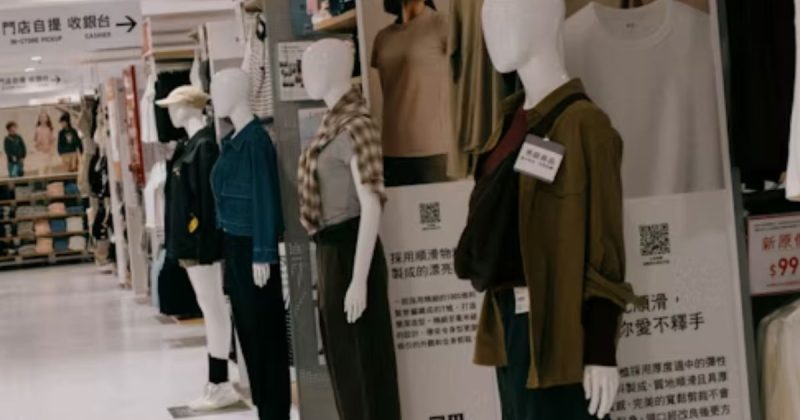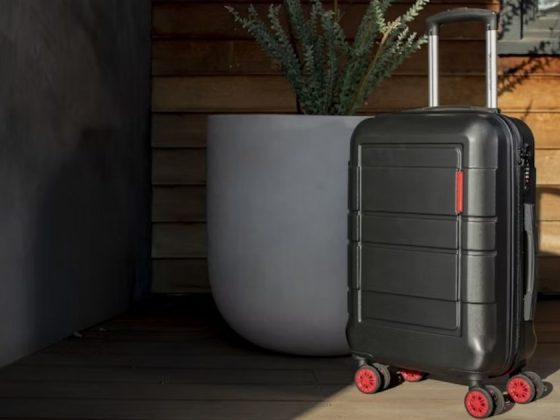Workwear in the 21st century has undergone a marked transformation, moving beyond traditional office attire rooted in stiff collars, rigid fabrics, and strict dress codes. The concept is shaped by an emphasis on professionalism blended with comfort, functionality, and individual expression. This shift reflects broader changes in workplace structures, driven by technological advancements and the growing prevalence of hybrid and remote work models.
The evolving landscape demands apparel that adapts seamlessly across multiple environments—corporate offices, home workspaces, and mobile settings—while maintaining a polished and versatile appearance. Clothing choices increasingly align with values such as flexibility, sustainability, and authenticity. The current state of workwear is defined by a careful balance of form and function, with emerging trends and innovative materials influencing the design of garments tailored for the modern professional world. Explore the workwear trends that combine flexibility, sustainability, and innovation, adapting seamlessly to corporate offices, home workspaces, and mobile settings.
The Shift Toward Comfort and Flexibility in Workwear
The Changing Workplace Environment
The past few years have brought about a profound shift in how and where we work. The rise of remote work, hybrid office setups, and flexible schedules has revolutionized how we approach our workdays and wardrobes. In the 2020s, comfort became a priority as employees sought to maintain work-life balance, leading many businesses to relax their dress codes.
This trend is expected to continue, with workwear that allows for more mobility, flexibility, and comfort, whether working from home, in a co-working space, or at the office. Professional attire no longer has to be synonymous with stiff collars or formal dress shoes. Instead, Workwear will embrace fabrics and cuts that prioritize comfort without sacrificing style.
The Rise of Athleisure in the Office
Athleisure, a category of clothing that blends athletic wear with casual and business attire, has gained popularity in recent years. It is predicted to be more than just a trend—it’s becoming an essential part of the modern workwear wardrobe.
Designers and brands have infused the comfort and performance of athletic fabrics into traditional office wear. Stretchy materials, moisture-wicking fabrics, and even sweat-resistant finishes are incorporated into everything from blazers and trousers to dresses and skirts. These fabrics allow for more significant movement and flexibility, ensuring you stay comfortable and productive, even during long hours at the office.
Key Pieces of Workwear Trends
1. Smart Suits with Tech-Enhanced Features
While casual workwear continues to grow in popularity, the suit will remain a staple. The modern suit has adapted to meet the needs of today’s world, featuring innovative fabrics that manage moisture, regulate temperature, and resist wrinkles.
- Enhanced Fabrics: Fabric Innovations today will likely include textiles with embedded sensors that monitor your temperature or posture. Imagine a suit that adjusts to your body’s needs, keeping you comfortable in a meeting or on the go.
- Customizable Fits: Technology will also impact how suits are tailored. 3D printing, custom measurements, and AI-based design tools will allow perfectly fitted suits, so you won’t compromise style or comfort.
2. Flexible Footwear
Footwear has traditionally been one of the least comfortable elements of Workwear. However, a shift towards shoes that blend professional style with the comfort and durability of athletic footwear is expected.
- Slip-On Comfort: Footwear that does not require laces or buckles is becoming increasingly popular in professional settings. Slip-on loafers and sneaker-inspired designs offer a professional appearance while providing the support and cushioning necessary for long work hours.
- Sustainable Materials: Sustainability will play a crucial role in footwear production, with an increasing emphasis on eco-friendly materials such as recycled plastics, organic cotton, and vegan leather. These materials will contribute to a stylish and comfortable work shoe and support environmentally conscious choices in the workplace.
3. Versatile Dresses and Skirts
While trousers and blazers remain staples of the modern office, dresses and skirts are expected to return as companies embrace flexible Workwear. Versatility will be the key to making these pieces work for the office.
- The Tailored Dress: Professional women will gravitate toward dresses with clean lines, structured silhouettes, and strategic tailoring. These dresses will feature adaptable cuts, such as removable sleeves or adjustable waistbands, making them perfect for transitioning from the office to after-work events.
- Skirts with Stretch: Skirts will no longer feel restrictive. Stretch fabrics, adjustable waistbands, and designs that allow for easy movement will be the hallmark of work skirts.
- Hybrid Outerwear: Outerwear is another category that has seen significant changes in recent years. The days of heavy, formal coats are being replaced by hybrid jackets that combine warmth, style, and practicality. These pieces will incorporate lightweight insulation, weather-resistant materials, and clever design features that allow you to look polished while staying comfortable, no matter the conditions outside.
- Reversible Jackets: Some outerwear options feature reversible designs, giving you two looks in one. This type of jacket is perfect for those who want to keep their workwear streamlined without carrying multiple pieces.
- Packable Coats: The packable coat will be essential for working remotely or in co-working spaces. These coats can be folded into small pouches, making them easy to store when not in use while still providing the necessary warmth and style when needed.
Sustainability and Ethical Fashion in Workwear
Eco-Friendly Fabrics
Sustainability remains a major trend in fashion, and Workwear is no exception. As consumers demand more eco-conscious options, designers increasingly turn to sustainable materials for their collections.
Recycled Materials: Workwear will incorporate fabrics made from recycled plastic, textiles, and natural fibers. For example, garments made from recycled polyester will reduce waste and be lightweight, durable, and easy to care for.
Organic Cotton and Hemp
Organic cotton and hemp will become more common in office clothing, offering sustainable, breathable, and biodegradable options for those looking to reduce their environmental impact.
Transparent Supply Chains
Transparency in the supply chain is another growing trend. Many brands will offer consumers insight into how their clothing is made, where the materials are sourced, and the ethical practices behind the production process.
Certifications and Labels
Look for workwear brands with certifications such as Fair Trade, GOTS (Global Organic Textile Standard), or B Corp to ensure their products are produced using ethical and sustainable practices.
Circular Fashion
The circular fashion concept, which promotes the recycling and repurposing of clothing, is gaining traction in the workwear market. Instead of buying new garments, some brands will allow you to rent, exchange, or recycle workwear, ensuring that the clothing you wear doesn’t contribute to waste.
The Role of Technology in Workwear
Wearable Technology
Wearable technology is set to play a significant role in the future of Workwear. We may see clothing integrating innovative features, such as built-in fitness trackers, temperature regulators, or lighting.
Bright Fabrics: Clothing embedded with sensors monitors your body’s vitals and adjusts the fabric to ensure optimal comfort and health throughout the day.
Charged Clothing
Imagine a jacket that can charge your phone or laptop while moving. This technology could become a reality, making Workwear comfortable and practical for those who need to stay connected at all times.
Virtual Fitting Rooms
In the future, trying on Workwear in person may become a thing of the past. Virtual fitting rooms, powered by augmented reality (AR), will allow shoppers to see how garments fit and look on their bodies through their smartphones or AR glasses. This innovative technology will provide a seamless, convenient shopping experience, letting users virtually try on clothes from the comfort of their homes.
Body Scanning Technology
Body scanning tools that capture precise measurements will make online shopping more accurate. These technologies ensure that customers can find clothing that fits perfectly every time, eliminating the uncertainty of sizing and reducing the need for returns. With pinpoint accuracy, body scanning technology offers a personalized shopping experience that takes the guesswork out of buying Workwear.
Trends in Gender-Neutral and Inclusive Workwear
Breaking the Boundaries of Traditional Workwear
As conversations around gender inclusivity and fluidity gain momentum, Workwear is expected to become more gender-neutral. Both men and women will have access to a wider variety of options that focus on comfort, style, and function rather than adhering to traditional gender norms.
Unisex Workwear
Clothing will be designed for all, regardless of gender. Whether tailored suits or more relaxed fits, the emphasis will be on versatility and comfort that accommodates every body shape.
Adaptive Clothing for All Abilities
Inclusion is becoming a priority in fashion, and Workwear will follow suit. Adaptive clothing—designed for those with disabilities or mobility challenges—will continue to evolve, ensuring everyone can enjoy stylish, professional clothing that accommodates their needs.
The Future of Workwear: Where Comfort Meets Professionalism
A harmonious blend of comfort, innovation, and personal expression will define Workwear. As workplace culture continues to evolve, so will the clothing we wear. No longer confined to the rigid, uncomfortable attire of the past, Workwear will reflect modern values—comfort, sustainability, and individuality.
Whether working from home, commuting to the office, or attending virtual meetings, the future of Workwear will empower you to feel confident, comfortable, and professional in every setting. So, as we look ahead to the next few years, it’s clear that the future of professional clothing is not just about looking good—it’s about feeling good, too.





